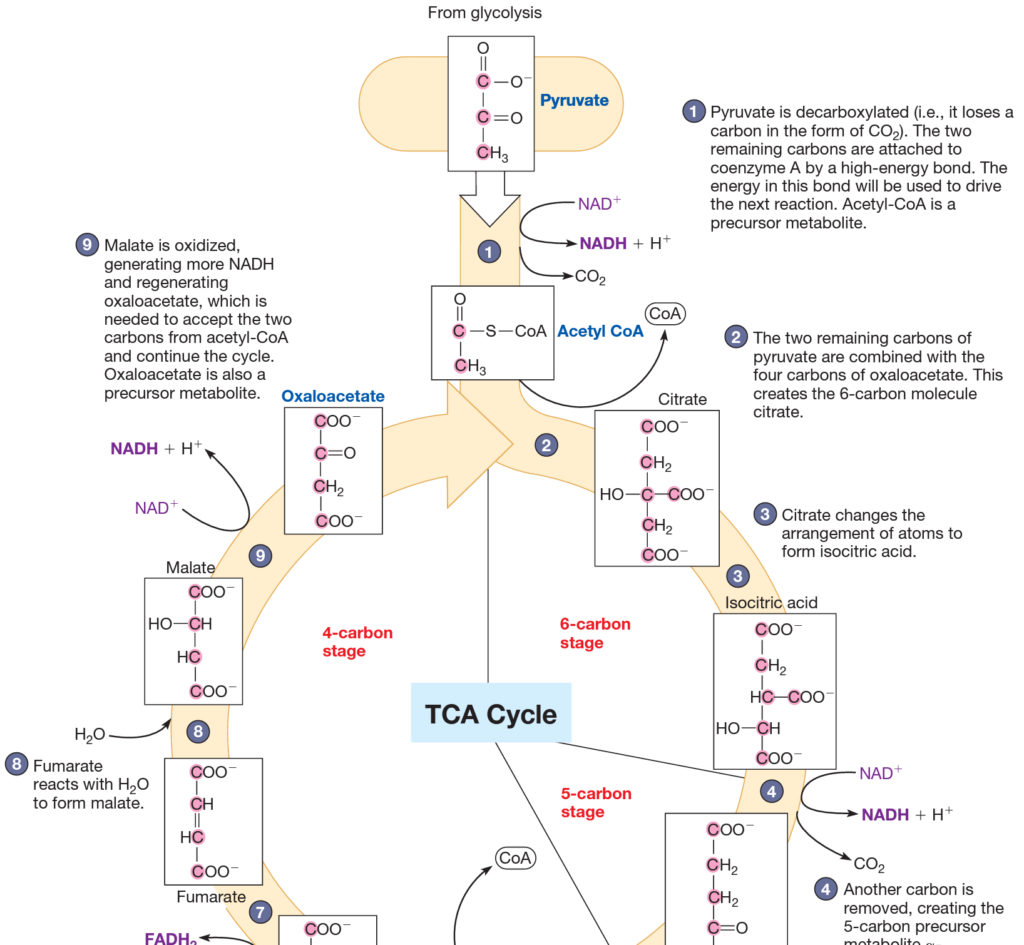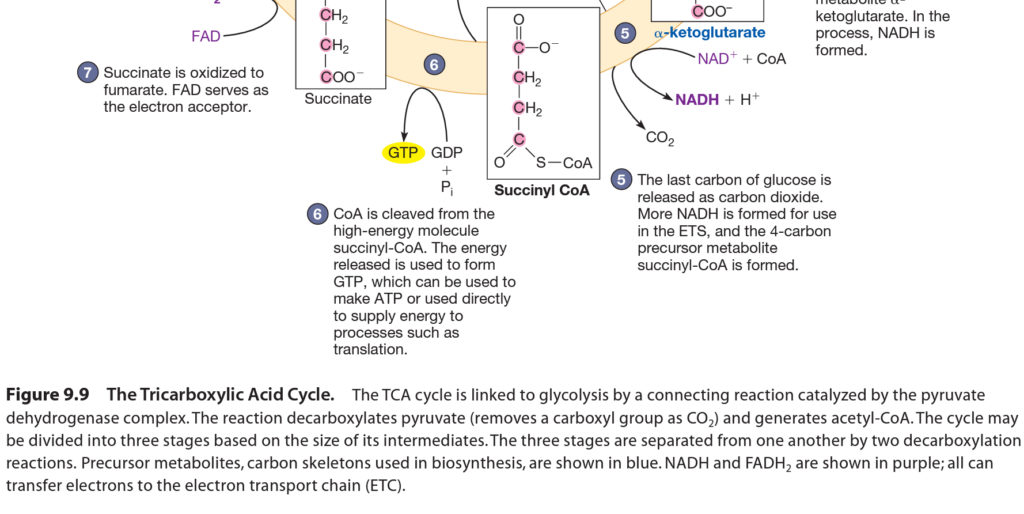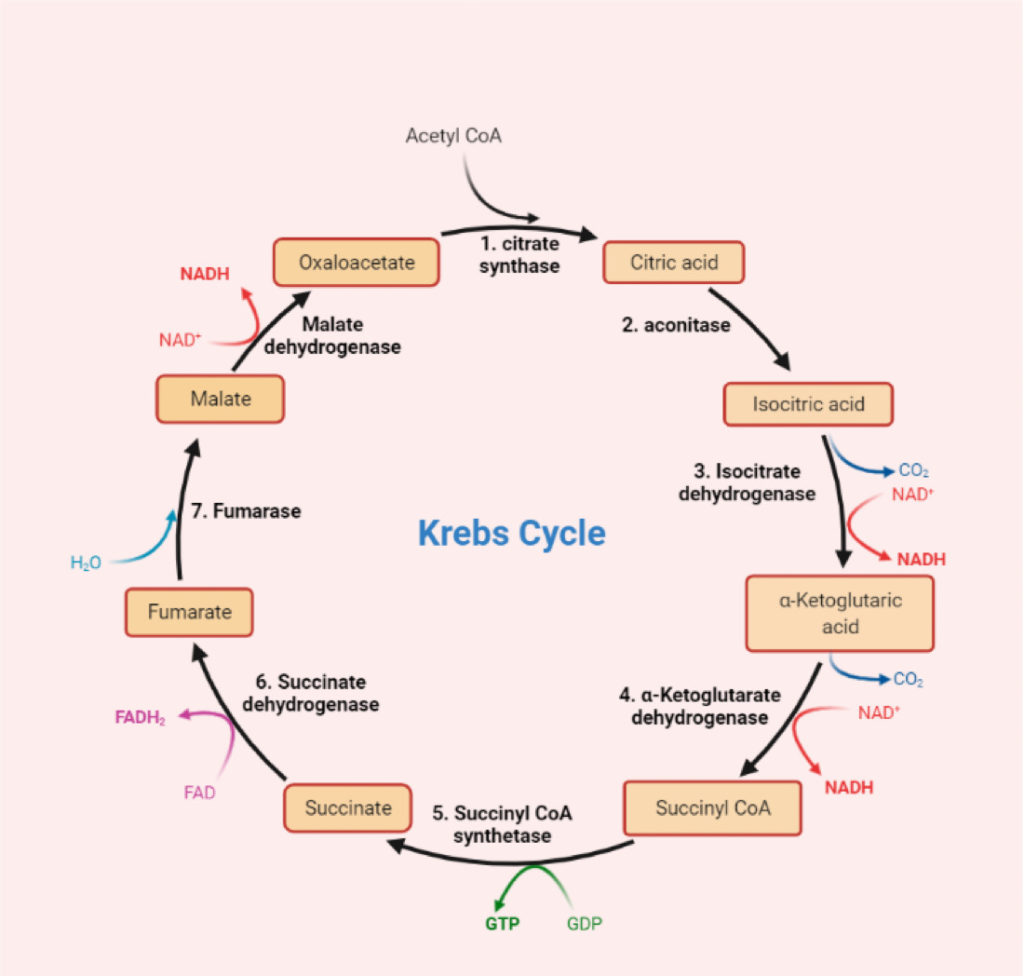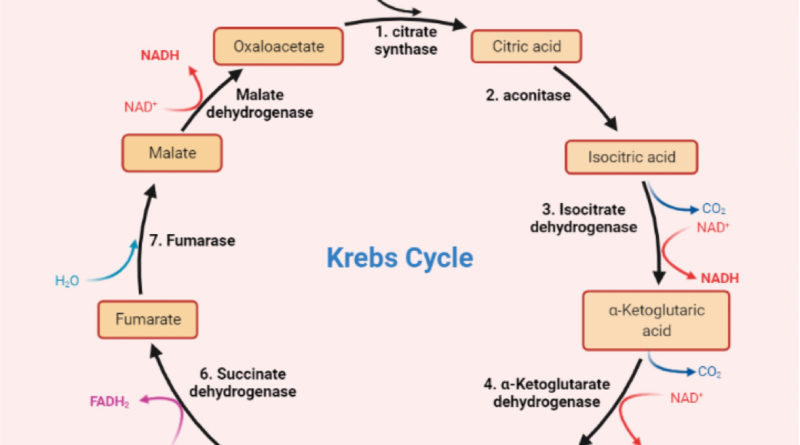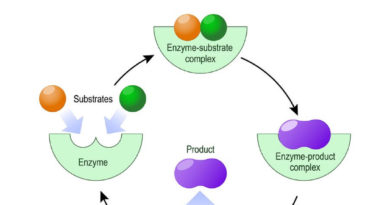The Tricarboxylic Acid Cycle
There are several metabolic pathways have been identified, those are used to liberate energy from food components. In the glycolytic pathways, the energy id captured by the oxidation of glucose to pyruvate, this energy is limited to no more than two ATP generated by substrate level phosphorylation.
During aerobic respiration, the catabolic process continues by oxidizing pyruvate to three CO2.
The first step of this process involve a multi enzyme system called – pyruvate dehydrogenase complex. During this process pyruvate is breakdown by oxidation and cleaves, to form one CO2 and two-carbon molecule acetyl – coenzyme A (acetyl-CoA).
Acetyl – CoA is energy rich because of a high – energy thiol links acetic acid to coenzyme A.
Three of aerobic respiration, carbohydrate as well as fatty acids and amino acids can be converted to acetyl-CoA. Acetylene-CoA then enters the tricarboxylic acid (TCA) cycle, which is also called a citric acid cycle or the kreb’s cycle.
